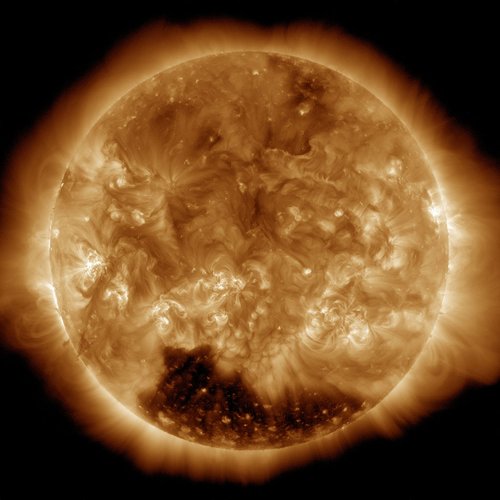Current Info for Observer
as of 07/27/2024 8:34 a.m.
Please login to view current observation details
General Info
as of 07/27/2024 8:34 a.m.
| Type | Star |
| Constellation | Cancer |
| Magnitude | -26.80 |
| Right ascension | 8:28:36.59 (Hours) |
| Declination | 19:03:44.2 (Deg) |
| Distance from Earth | 1.01550AU |
| Distance from Sun | 0AU |
| Elongation | 0:00:00.0 |
| Mass | 333,000.0 ⊕ |
Our star, the Sun. | |
☉ Solar Masses ⊕ Earth Masses j Jupiter Masses
70mm Solar Refractor
100 points
Celestron Omni XLT 150
100 points
No better time like now to observer the sun, short of an eclipse. There were some interesting sun spots and of course, the transit of Mercury.
Naked eye
100 points
Enjoyed the rise of the sun after another viewing of the close pairing of planets this morning.
Naked eye
100 points
Once I was done admiring the view of the early morning planets, I hung around to watch the sunrise. What a beautiful, if breezy, fall morning.
Skywatcher Skymax 90
100 points
Nice weather today which meant I spent most of the day in the garden. But I decided that I needed a short break from gardening and pulled out my little 90mm Mak with Baader AstroSolar Safety Film in order to have a peek at our closest star, the Sun! Seeing wasn't that great so it was a bit difficult to nail that perfect focus, especially when I hooked up the DSLR to the scope to try to get a few images during the short session. There were a few visible sunspots, no really big ones though. I'll check the images I shot as soon as I can. Hopefully there are a few frames I can stack and then add something to this report. Well, since the nights are getting increasingly brighter, I will most likely to spend more time with solar observation.
Edit 2015-06-02 Added an image from the session. Didn't turn out that great though, most likely because I failed to really get the focus spot on.
Generate a finder chart
The following form will generate a PDF finder chart suitable for printing using to locate objects in the sky with your telescope!
The Date is only really useful for solar system objects, as deep space objects move measurably only on a galactic timescale.
The larger the F.O.V (field of view), the more "zoomed out" the object will appear. It can be helpful to print several charts of the same object with different field of views.
Limiting the magnitude (remember, lower magnitude means brighter!) of stars and objects can make sure your chart is not cluttered with dim objects that you may not be visible to you anyway. The defaults are good, but try experimenting with raising and lowering the values.
Please login to post comments

